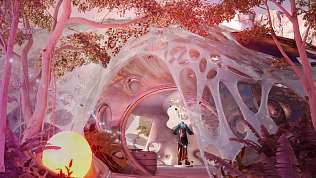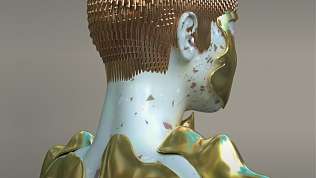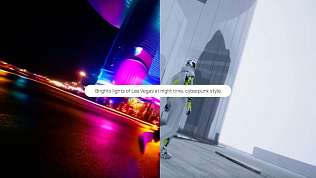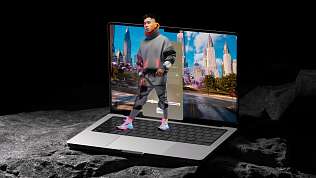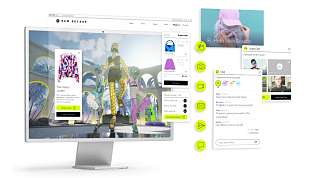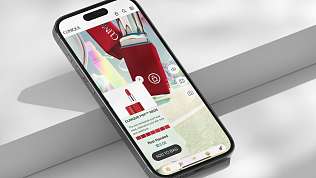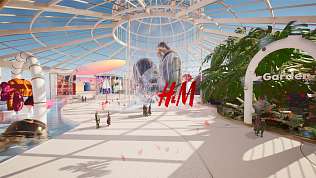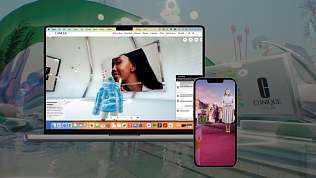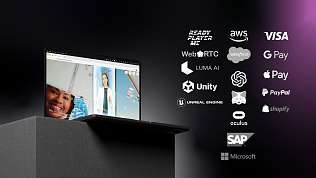Exploring the Possibilities of Metaverse Technology and the Immersive Web for Fashion Brands
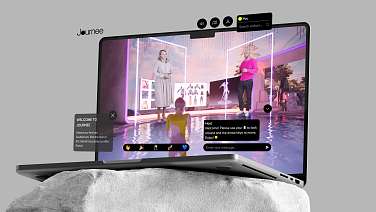
A Brief Introduction to the Immersive Web
The immersive web is the future of the internet, bringing together people, places, and activities from around the world. Still in its relative infancy, the immersive web carries tremendous potential for every industry and sector in the digital age.
Think of the immersive web as a place where people can explore, create and collaborate through avatars, digital environments, and real-time interactions. From gaming to art galleries to live streaming concerts, the immersive web offers an ever-changing landscape of exciting opportunities for exploration and connection. Beyond entertainment, the immersive web is also uniquely positioned to transform the way we shop and interact with brands.
With the rise of virtual reality technology, immersive experiences have become more accessible than ever before – enabling anyone with an internet connection to experience new worlds without leaving their home.
How Will the Immersive Web Impact the Fashion World?
Buying behavior and consumer trends have changed drastically in the past few years, prompting a digital transformation of the fashion industry. From algorithm-predicted fashion trends to social media shopping features, brands are finding new ways to reach their audiences and provide easier ways for them to shop. This is especially true with members of the GenZ and younger Millennial generations.
According to a GWI article about GenZ fashion trends, “Consumers no longer go looking for things to buy. Instead, brands meet consumers at their hangout spot while they’re looking for inspiration.“
With the growth of the immersive web, fashion brands have an even greater opportunity to open new business models and revenue streams. Fashion no longer must exist in the physical world or even the online world. With its advanced technology, the immersive web enables fashion designers and e-commerce brands to create immersive, virtual versions of their products and bring them to life in digital spaces, also known as immersive shopping or virtual showrooms. Indeed, we expect to see a new generation of immersive fashion shows and stores as well as virtual influencers. View use cases
Consumers can now experience fashion designs in 3D, explore them from different angles, and even try them on before deciding to purchase. This provides an immersive way to engage with potential customers, as well as a unique platform for engaging with social influencers and sharing content. Additionally, fashion brands have the potential to leverage augmented reality features such as facial detection and voice recognition to provide an interactive shopping experience. Brands can even offer made-to-order garments where customers can design them within the immersive web. One thing is for certain: fashion is moving into the immersive web. According to BCG, the expected revenue in 2030 for digital fashion is expected to be $6 Billion.
Read market reports, use cases and how-to steps in our iCommerce eBook
How Does Immersive Shopping Promote Sustainability?
Whether because of government-enforced regulations or more altruistic reasons, companies are doubling down on sustainable practices. According to a recent study, 90% of executives believe sustainability is important, but only 60% of organizations have sustainability strategies. We can therefore expert sustainability to be an important consideration to future innovation.
Sustainability is especially important in the fashion world. Today, there is more attention on the impact of “fast fashion,” prompting buyers to call on brands to minimize their carbon footprint, wasting of resources, and overall environmental impact.
The use of virtual reality can help brands reduce wasteful practices, help save resources and energy, as well as provide endless possibilities for creativity. In fact, 97% less CO2 is produced through digital versus physical clothing. Furthermore, online shopping can promote a more sustainable lifestyle since users don’t have to buy items they won’t use or consume them quickly before they go out of style.
Even fashion industry titan Anna Wintour seems to be on the immersive web train, stating “[It] presents an opportunity to reduce waste, minimize impact, and fundamentally reshape consumption for a cleaner future.”
Immersive Fashion Consumer Engagement Best Practices
At Journee, we’ve worked with leading fashion brands on revolutionizing the way they connect with their customers in virtual spaces, including H&M, Vogue Business, and more.
When H&M approached the team at Journee, they wanted to transform their brand experience by creating a virtual showroom where customers and business partners could engage around the clock. The biggest challenge to creating such an experience is to make virtual fashion immersive; to make it come alive. Other best practices we’ve seen to increase consumer engagement include:
Ensure a seamless brand experience: prioritize representing a clear connection between your brand in the real world and in the immersive web. Customers appreciate consistency so while you do want to “transform” the experience, ensure it’s still in line with the look and feel of the brand.
Be mindful of navigation and user flow: consider the journey (or journeys) for different members of your target audience. Your customers want an experience so make the user flow as clear as possible.
Uphold brand values at every turn: virtual showrooms are an excellent opportunity to showcase your brand’s commitments and values in a friendly and accessible way.
Invest in the right support: hit the ground running in the immersive web by investing in the right team for the job. The team at Journee helps brands navigate the end-to-end process; from design and strategy, to creation and launch.
Immediate and Long-Term Benefits
Immersive web experiences provide fashion brands with many avenues to develop and grow their business. In the short-term, they can take advantage of technological advancements such as 3D modeling and virtual reality (VR) to create immersive experiences that allow customers to interact with the brand's products in a more lifelike way.
Additionally, brands can bandwagon on the hype and novelty to edge out competitors, as well as partner with leaders in the space. The immersive web also enables fashion brands to use digital marketing tools such as AI-driven influencers and AR/VR tools to enhance customer engagement and build stronger relationships with their customers.
In the long run, fashion brands can benefit from enhanced data analytics capabilities offered by the immersive web which allows them to accurately measure customer behavior, preferences and trends in real time. This in turn can help them make better decisions when it comes to product development and marketing strategies. Moreover, fashion companies will be able to reduce costs associated with physical stores as well as travel expenses for designers since much of this work can be done virtually in the immersive web.
How to start?
Luckily, fashion brands have already made several successful entry points into the immersive web. Furthermore, taking advantage of this opportunity doesn’t necessarily mean an overhaul of your existing business model. For instance, Dolce & Gabbana recently presented 20 bespoke digital wearables at the Metaverse Fashion Week (yes, it exists!). Apart from big strides in luxury fashion from other brands like Gucci and Prada, Nike too has created a space for shoppers to create virtual sneakers.
To begin implementing metaverse tech and immersive web applications into your business model, you must first create an immersive web strategy. This strategy should cover everything from your objectives and KPIs to how you will go about creating the space and what access you will give to visitors.
Next, consider how you will build your virtual space. For example, through JourneeX, you can easily build interactive worlds and environments that give customers a completely new way to interact through your brand.
Once you know what you are going to build and how you are going to build it, consider if you will need an in-house team to support you through the process. At Journee, we’ve worked with some of the world’s most well-known brands and can offer the expertise to guide you through every step of the process.
After your plan and strategy are firmly set in place, you can start to create your virtual space.
Summary
In conclusion, The fashion industry has experienced an exciting new development with the emergence of the immersive web: virtual worlds where users can take part in digital activities such as socializing and shopping. By leveraging the power of technology available through the immersive web, fashion brands will be able to unlock new levels of creativity while optimizing operations and increasing profitability in both the short-term and long-term.
As the immersive web continues to evolve, so will the opportunities for fashion brands to expand their reach and enhance customer engagement with immersive experiences that bring together style and technology like never before. Discover our solutions for fashion industry
To learn more about Journee and our powerful immersive web platform - JourneeX, click here.

